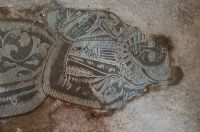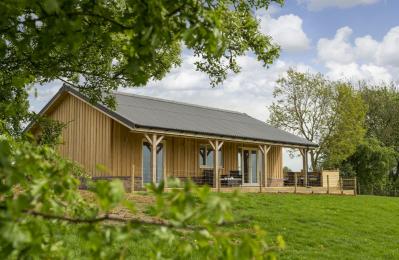
In the south aisle are two sections of medieval wall painting, which were hidden for many years under coats of plaster.
All four of the stained glass windows in the chancel were made by Kemp. If you are visiting with a child, set them to find Kemp's trademark wheatsheaf symbol, which is hidden in every window.

Though the interior is interesting, the most intriguing feature of All Saints is outside. Go around the side of the west tower and there you will find a roughly carved statue, about three feet high, depicting a grinning figure. The reverse of the figure is flat, and it was used for many years to form a step, so the carving was only discovered when the step was taken up.
No one knows how old the carving is, or what it is supposed to represent, but it is almost certainly pre-Christian. It may be a symbol of an ancient fertility cult or some form of Celtic Earth Mother. Whatever it is supposed to represent, it is quite an extraordinary bit of primitive sculpture and deserves more recognition.

Note: Do not mistake this church with All Saints, Braunston, Northamptonshire, the 'Cathedral of the Canals'.












 We've 'tagged' this attraction information to help you find related historic attractions and learn more about major time periods mentioned.
We've 'tagged' this attraction information to help you find related historic attractions and learn more about major time periods mentioned.




